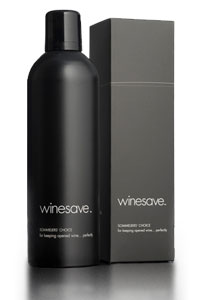 With the very nature of wine appreciably less intimidating nowadays and a growing familiarity amongst the populace, a glass of wine is increasingly becoming a part of everyday life around the world.
With the very nature of wine appreciably less intimidating nowadays and a growing familiarity amongst the populace, a glass of wine is increasingly becoming a part of everyday life around the world.
Today’s more self-assured, open-minded wine consumer has a considerably larger vinous world to explore with a myriad of regions, varieties and styles.
As any wine marketer will acknowledge, wine consumers are at their most inquisitive and adventurous in a restaurant environment or wine bar and willing to try something new, most likely served by the glass.
Indeed, serving wine by the glass or even tasting portions is universally transforming wine service and consumption patterns giving the consumer a greater choice of wines to discover moreover, promoting the pairing of wines to specific dishes and enhancing the homogeneous synergies of enjoying wine with food.
This is where restaurants, wine bars and hotels have had the distinct advantage over the home consumer in rationalizing thousands of dollars for commercial wine preservation systems such as the high-tech Enomatic www.enomatic.co.nz which utilizes the indispensible inert noble gas argon; being colorless, odorless and flavorless, protects the wines essential qualities for more than 3 weeks.
Imagine though, if you could take this same approach at home and depending on your mood or what you were eating, you could choose from a range of wines – by the glass! Or even the very notion that you can open up a bottle wine anytime and not feel compelled to drink all of it.
Obviously this would normally pose a problem with the opened bottles going off, as wines main enemy is air; more specifically exposure to oxygen and subsequently spoilage by premature oxidization.
 However, an innovative Australian company, winesave www.winesave.com has introduced ground-breaking technology that successfully dispenses food-grade argon in an effective and affordable canister.
However, an innovative Australian company, winesave www.winesave.com has introduced ground-breaking technology that successfully dispenses food-grade argon in an effective and affordable canister.
No doubt there will be some consumer skepticism with the very mention of ‘gas’ however, argon has been used in wineries and food production for many years and is a completely natural product coming from the very air we breathe, and obtained by modern methods of liquefaction of gases and fractional distillation.
Argons most exceptional quality is it combines with nothing; an atom that is totally resistant to bonding with other elements and being two and half times heavier than air, simply falls down displacing the harmful oxygen, forming an impenetrable layer between the wine and air.
With the wine bottle kept upright and relatively cool, the barrier of argon will preserve wine perfectly for many weeks, indeed months. I have personally trialed winesave for several months on a wide range of grape varieties, styles and bottle age; from young and relatively fragile aromatic white wines to completely mature vintages of red wines, even a 1977 Vintage Port.
The results were conclusive if not astounding with not one wine showing any sign of deterioration at all. Even after opening and resealing several times, all kept perfectly for over 2 months, and some improved!
All technology has its evolutionary process and competing products and applications. In the area of wine preservation there has been a multitude of devices touted over the years, with limited success and inadequacies leading to consumer indifference.
The most commercially popular alternative to displacing harmful oxygen without using an inert gas has been inducing a vacuum, or extracting the air by a hand pump pioneered by Vacu Vin www.vacuvin.com. At its inception in 1986, it was unquestionably revolutionary and now boasts a consumer base of “30 million households in more than 75 countries throughout the world.”
There is however industry consensus that such hand pump operated systems do not accurately measure the vacuum pressure and arguably detrimental to the wine, certainly questionable in a commercial application.
That said one of the front runners of the vacuum method, Le Verre de Vin www.pouringforprofits.com has developed technology “precisely measuring the vacuum needed to provide maximum preservation whilst at the same time retaining the flavours within the wine.” However, putting this in to perspective, it is a commercial application running into several thousand pounds sterling.
There is also another new Australian innovation (seems to be an obsession down-under) called Wine Shield www.winepreserva.com, a plastic disc inserted in the bottle that floats on the surface creating a barrier between the wine and the air space claiming to “Significantly slow oxidation”, “… keeping wine fresh for up to 5 days.” At face value, an affordable and practical application although conjectural and clearly has its limitations.
Appreciating that there is palpable consumer disconnect with wine technology – although I personally await the Star Trek Replicator, dialing up a rare vintage by “rearranging subatomic particles” – the simplicity, affordability, natural qualities of argon and winesave technology is a watershed development that will revolutionize wine consumption at home, and anywhere wine is served – by the glass.
Moreover, winsave is the perfect Christmas present for wine enthusiasts, even for those wine connoisseurs who we struggle to find the appropriate gift.
Read more about winesave: A Watershed Development for the Wine Consumer & Wine World
|
|
Tweet |






No comments to Start Your Own Wine Bar at Home! | Comments Feed
No comments yet
The comments are closed.